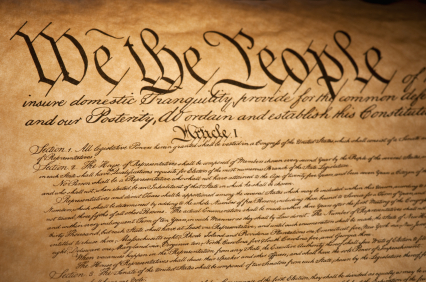California Family Law 2017 Update: “Date of Separation”
In late 2016, the California Legislature addressed an issue which was making separation and divorce quite difficult for families because of the emphasis which was placed by the law on the necessity for the spouses to be living in separate residences in order for them to be considered to be living “separate and apart”.
The high cost of housing in California was making the transition out of reach for some couples who were quite clear on the fact that their marriage was irremediably broken, but did not immediately have the financial resources for two separate residences.
In effect, the law determining the date of separation until this year was adding significant stress for couples in transition.
The decision of the California Supreme Court in Marriage of Davis (2015) 61 C4th 846 meant that, under the law, spouses who were ending their marriage were, at law, “stuck” together as a couple until they could afford separate residences.
The new law, effective January 2017, remedies this situation. By giving divorcing couples this flexibility, the California Legislature in effect increases the likelihood of an amicable divorce, either through Mediation or Collaborative Family law.
First, the California Legislature added to the California Family Code a new section, Section 70, which supersedes Marriage of Davis and provides a new definition of date of separation, and a new standard to determine it:
SECTION 1.
Section 70 is added to the Family Code, to read:
70.
(a) “Date of separation” means the date that a complete and final break in the marital relationship has occurred, as evidenced by both of the following:
(1) The spouse has expressed to the other spouse his or her intent to end the marriage.
(2) The conduct of the spouse is consistent with his or her intent to end the marriage.
(b) In determining the date of separation, the court shall take into consideration all relevant evidence.
(c) It is the intent of the Legislature in enacting this section to abrogate the decisions in In re Marriage of Davis (2015) 61 Cal.4th 846 and In re Marriage of Norviel (2002) 102 Cal.App.4th 1152.
The old references to “living separate and apart” were also eliminated from the other sections of the California Family Code, in order to harmonize them with new Section 70, by having these other related sections refer instead to “the the date of separation of the spouses”. Thus:
SEC. 2.
Section 771 of the Family Code is amended to read:
771.
(a) The earnings and accumulations of a spouse and the minor children living with, or in the custody of, the spouse, after the date of separation of the spouses, are the separate property of the spouse. (Emphasis added.)
(b) Notwithstanding subdivision (a), the earnings and accumulations of an unemancipated minor child related to a contract of a type described in Section 6750 shall remain the sole legal property of the minor child.
SEC. 3.
Section 910 of the Family Code is amended to read:
910.
(a) Except as otherwise expressly provided by statute, the community estate is liable for a debt incurred by either spouse before or during marriage, regardless of which spouse has the management and control of the property and regardless of whether one or both spouses are parties to the debt or to a judgment for the debt.
(b) “During marriage” for purposes of this section does not include the period after the date of separation, as defined in Section 70, and before a judgment of dissolution of marriage or legal separation of the parties. (Emphasis added.)
SEC. 4.
Section 914 of the Family Code is amended to read:
914.
(a) Notwithstanding Section 913, a married person is personally liable for the following debts incurred by the person’s spouse during marriage:
(1) A debt incurred for necessaries of life of the person’s spouse before the date of separation of the spouses. (Emphasis added.)
(2) Except as provided in Section 4302, a debt incurred for common necessaries of life of the person’s spouse after the date of separation of the spouses. (Emphasis added.)
(b) The separate property of a married person may be applied to the satisfaction of a debt for which the person is personally liable pursuant to this section. If separate property is so applied at a time when nonexempt property in the community estate or separate property of the person’s spouse is available but is not applied to the satisfaction of the debt, the married person is entitled to reimbursement to the extent such property was available.
(c) (1) Except as provided in paragraph (2), the statute of limitations set forth in Section 366.2 of the Code of Civil Procedure shall apply if the spouse for whom the married person is personally liable dies.
(2) If the surviving spouse had actual knowledge of the debt prior to expiration of the period set forth in Section 366.2 of the Code of Civil Procedure and the personal representative of the deceased spouse’s estate failed to provide the creditor asserting the claim under this section with a timely written notice of the probate administration of the estate in the manner provided for pursuant to Section 9050 of the Probate Code, the statute of limitations set forth in Section 337 or 339 of the Code of Civil Procedure, as applicable, shall apply.
(d) For purposes of this section, “date of separation” has the same meaning as set forth in Section 70.
SEC. 5.
Section 4338 of the Family Code is amended to read:
4338.
In the enforcement of an order for spousal support, the court shall resort to the property described below in the order indicated:
(a) The earnings, income, or accumulations of either spouse after the date of separation, as defined in Section 70, which would have been community property if the spouse had not been separated from the other spouse. (Emphasis added.)
(b) The community property.
(c) The quasi-community property.
(d) The other separate property of the party required to make the support payments.






No comments yet.